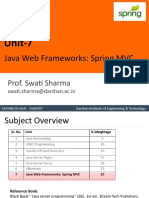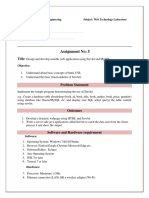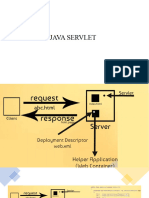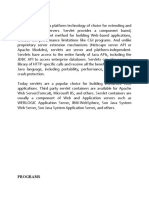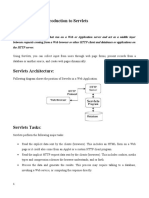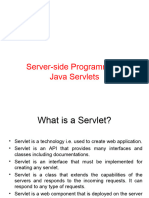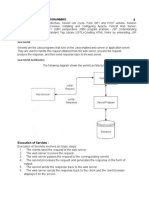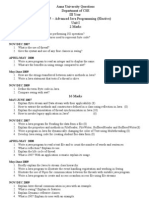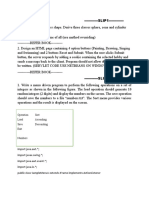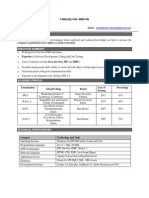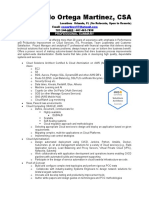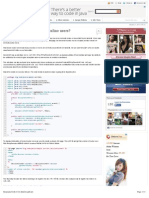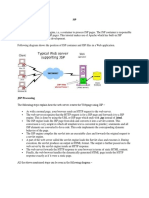0% found this document useful (0 votes)
163 views57 pagesJava Servlets: Overview & Examples
The document provides an overview of Java servlet technology. It discusses what servlets are, their architecture and lifecycle. It explains why servlets are used and provides examples of servlets that process parameters and use sessions. The TimeServlet example demonstrates a simple servlet that displays the current time. Deploying servlets on Eclipse IDE is also covered.
Uploaded by
sakshamCopyright
© © All Rights Reserved
We take content rights seriously. If you suspect this is your content, claim it here.
Available Formats
Download as PDF, TXT or read online on Scribd
0% found this document useful (0 votes)
163 views57 pagesJava Servlets: Overview & Examples
The document provides an overview of Java servlet technology. It discusses what servlets are, their architecture and lifecycle. It explains why servlets are used and provides examples of servlets that process parameters and use sessions. The TimeServlet example demonstrates a simple servlet that displays the current time. Deploying servlets on Eclipse IDE is also covered.
Uploaded by
sakshamCopyright
© © All Rights Reserved
We take content rights seriously. If you suspect this is your content, claim it here.
Available Formats
Download as PDF, TXT or read online on Scribd
/ 57









